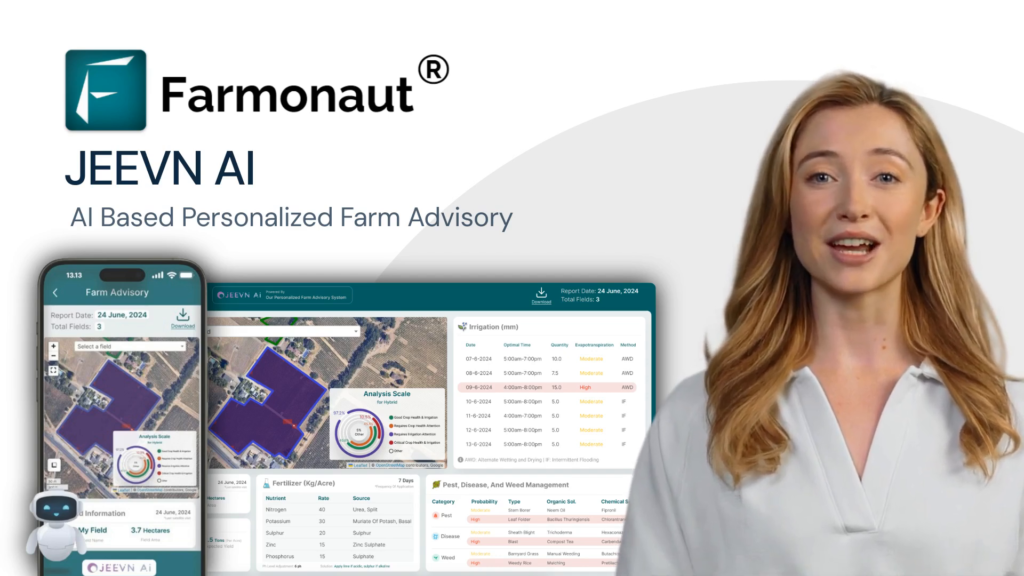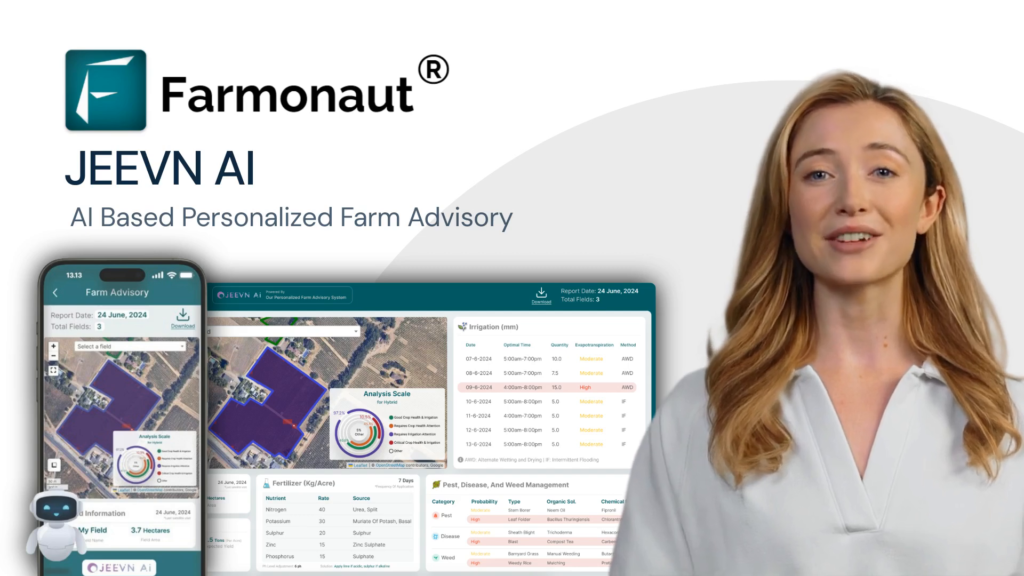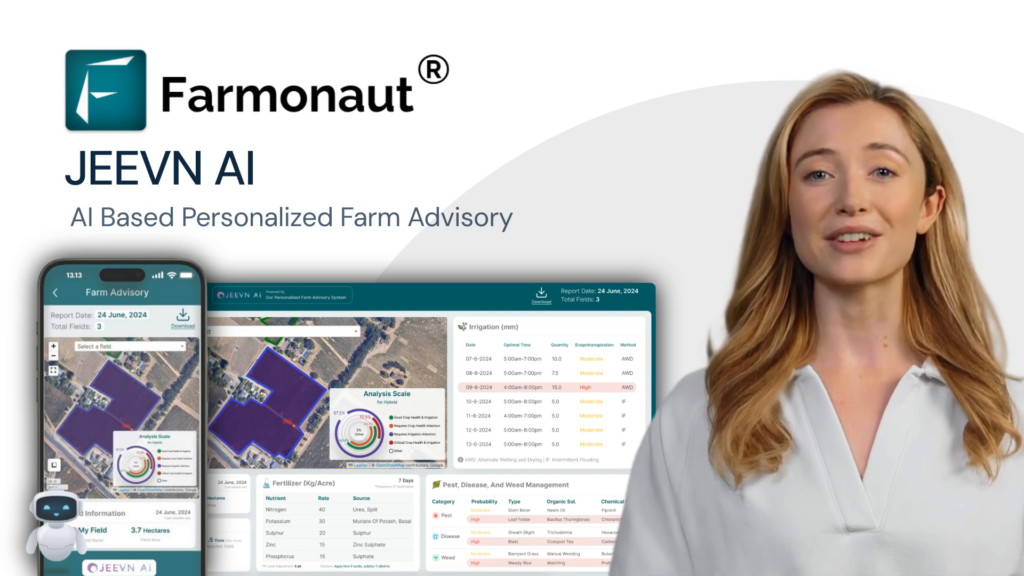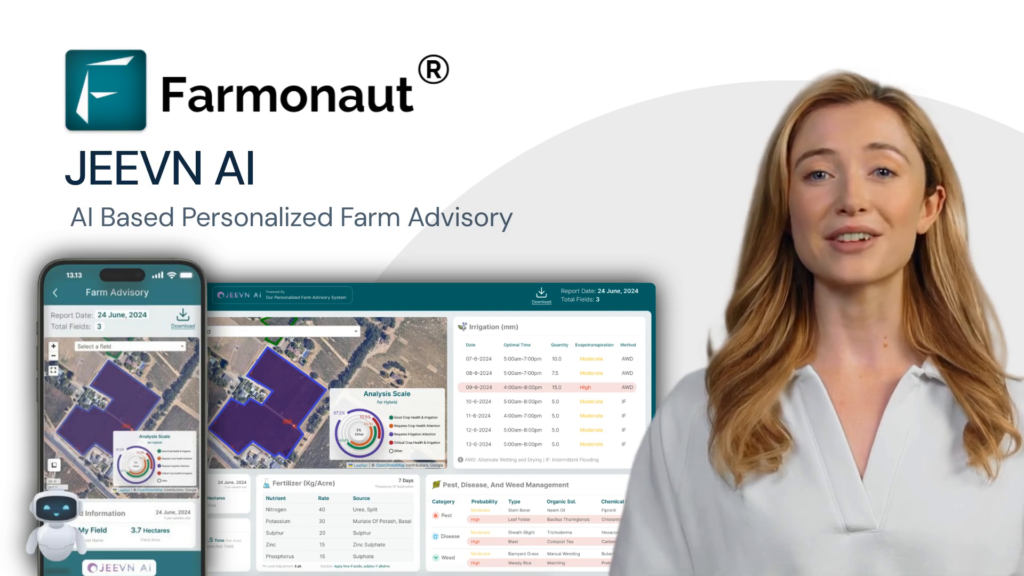Planting Season in Central Illinois: 7 Key Trends Shaping 2025
“In 2024, Central Illinois farmers completed 65% of corn planting within just two weeks due to optimal weather.”
Introduction
Every spring, as fields turn vibrant green, we watch the planting season in Central Illinois unfold with anticipation. In 2025, fieldwork progress is powering ahead of schedule across prime agricultural zones like Peoria County. For local farmers, a stretch of warm, dry weather through April and early May has turbocharged equipment into the soil, with crops already sown across most fields. This year’s planting season, shaped by regional variability in crop planting and shifting climate trends, is a story of adaptation, technology, and a continuous optimistic outlook for Illinois farmers.
This blog explores the seven key trends that are defining the 2025 spring planting schedule in Illinois. From early fieldwork advantages, changing weather conditions, and regional progress updates, to technology’s role in Peoria County farming conditions, we analyze both the opportunities and the challenges confronting our agricultural community this season.
Track your fields and get live advisories with Farmonaut’s precision agriculture tools! Download the app below:



Trends Overview: Planting Season in Central Illinois
Our analysis zeroes in on the unique planting season conditions in central Illinois for 2025. This region, especially Peoria County and surrounding areas, exemplifies a fast start driven by advantageous weather. We also contrast these conditions with those further south, where fields are wetter and progress is delayed. By exploring this landscape, we help all stakeholders make informed decisions based on the latest fieldwork progress updates and regional differences.
“Warm, dry conditions in Central Illinois accelerated soybean planting by 30% compared to the five-year average.”
1. Rapid Early Fieldwork Progress in Peoria County
This spring planting schedule in Illinois has seen exceptional momentum in Peoria County and its neighbors. Our farmers have taken full advantage of a run of warm, dry weather in April and early May, advancing fieldwork at record speed.
- In most areas across central Illinois, equipment moved swiftly onto fields after minimal delays.
- Peoria County farming conditions have enabled the majority of corn and soybean planting progress to be finished or very close to finishing ahead of schedule.
- Local farmers report that they’re “ahead” of their usual timelines thanks to the weather-induced early fieldwork advantages.
The ability to start and maintain planting operations early yields enormous benefits. Early crops experience optimal soil temperatures and favorable moisture. This sets up the remainder of the growing season for improved yields. In fact, when we can catch a few timely rains in the coming weeks, the year’s prospects become even better.
2. Impact of Warm, Dry Weather on Planting
Warm, dry conditions have been central to this year’s impressive fieldwork progress in Peoria County and surrounding central Illinois counties. But what exactly are the impacts of this weather?
Advantages of a Fast, Dry Start
- Fields become workable sooner—tractors and planters are less likely to get stuck in wet patches.
- Planting operations run on longer stretches of consecutive days, minimizing weather disruptions.
- Soil compaction risk is reduced because heavy machinery isn’t churning through muddy ground.
- Seeds benefit from steady soil temperatures, leading to more even crop emergence.
Peoria County’s farmers have used this window efficiently, with minimal interruptions to planting. This trend matches recent observations across the region, where up to 65% of corn planting was completed within two weeks in 2024, and 2025 is keeping pace.
However, while warm, dry weather benefits planting season in Central Illinois, it also creates the need for timely rainfall soon afterward to help solidify what’s been planted. This delicate balance requires us, as farmers and land managers, to stay vigilant.
3. Regional Variability: Delays in Southern Illinois
While Central Illinois experiences a promising situation, the story changes for our colleagues further south in the state. Regional variability in crop planting is clearly visible this year:
- In southern Illinois, persistent wetness has delayed planting schedules and made it difficult for equipment to enter fields safely.
- Farmers in these areas have faced challenges getting started, sometimes waiting weeks longer than those in Peoria County.
- This regional variability in planting progress will affect both the final yields and timing for spraying operations later in the season.
Despite the contrasting conditions, the overall outlook remains optimistic. As the season advances, timely rainfall will ultimately determine whether these earlier setbacks can be overcome.
4. Corn and Soybean Planting Progress: 2025 vs Previous Years
To understand how this planting season compares historically, we analyze fieldwork progress and crop-specific timelines:
- Corn planting in Peoria County has led the charge, with most fields finished or close to finishing earlier than in the past two years.
- Soybeans are following suit, propelled by cooperative weather front-loading operations into April and early May.
- Lessons from the last five years: More precise management and the ability to seize short windows of good weather are increasing productivity.
Fieldwork progress updates show broad regional coverage, with local farmers reporting minimal bottlenecks so far. This puts Central Illinois on pace for one of its best planting starts of the decade—provided that the upcoming weeks “catch a couple of rains.”
5. The Role of Technology in Modern Planting
Technology is quietly transforming how we respond to shifting farming conditions across Illinois. Real-time tools, such as those provided through the Farmonaut Web and Mobile Apps, are helping our community maximize the opportunities presented by the 2025 planting season.
- Satellite-based crop health monitoring: Farmonaut’s platform leverages multispectral satellite imagery to track NDVI, soil moisture, and other indicators for effective field management.
- AI-based crop advisory: Tools like Jeevn AI Advisory System analyze historical and real-time data (including weather, soil, and vegetation) to offer personalized insights—improving our farm management decisions during the planting season and beyond.
- Resource optimization: Satellite and data-driven planning help with fleet management, reducing operational costs and improving efficiency. Large agribusinesses and individual farmers alike can monitor progress, keep equipment in top condition, and better coordinate planting and post-planting operations.
Whether we’re tracking field-level health, managing fleets, or reviewing rainfall forecasts, integrating technology is now essential. For more on advanced fleet and logistics management, see Farmonaut’s Fleet Management solution—helpful for minimizing downtime during the crucial planting window.
For environmental-conscious farming, accurate carbon assessment is key. You can understand year-on-year sustainability impacts with the Farmonaut Carbon Footprinting Suite. This monitors, in real time, the emissions generated during your planting and growing operations, ensuring that sustainable practices go hand in hand with productivity.
6. Weather-Driven Challenges: Wind and Spraying Operations
Despite the excellent fieldwork pace so far, wind has presented challenges for both spraying and post-planting operations in Peoria County and neighboring areas.
- High winds can force delays in applying herbicides or fertilizers, as drift risks increase, potentially threatening newly established crops and nearby non-target vegetation.
- This means we must carefully monitor spray conditions—sometimes re-routing equipment or shifting schedules to await calmer periods.
- Effectively timing wind-sensitive operations, especially in large-scale plots, is supported by live weather feeds such as those integrated in Farmonaut’s Large-Scale Farm Management Platform.
Adapting proactively helps safeguard both yield and environmental integrity. It’s a reminder that even an “ideal” planting season requires ongoing, data-informed attention to constantly shifting farming conditions.
For developers and agribusinesses seeking even deeper insight during planting, get real-time weather and field data via Farmonaut’s Satellite & Weather API and explore technical documentation at the API Developer Docs.
For field managers in forest plantations, multi-crop environments, or rain-fed areas, learn about Farmonaut’s comprehensive Crop, Plantation & Forest Advisory Solution—aligned for nuanced advisory during unpredictable weather windows.
7. Outlook and the Importance of Timely Rainfall
As the dust settles on a brisk planting season in much of central Illinois, questions turn to the coming weeks. After a fast start, how can the outlook for Illinois farmers remain optimistic?
- Much now depends on catching beneficial rains to sustain growth and maximize crop yield.
- “If we can just catch a couple of rains here in the next week or so, that would be even better,” says Charlie Hensley, Peoria County Farm Bureau manager—summarizing the mood of hopeful anticipation across the region.
- Timely rainfall will help recently emerged crops solidify their establishment before any seasonal hot or dry spells hit.
With the majority of corn and soybean planting progress ahead of schedule and careful technological oversight, the region is poised for solid growing conditions. We remain vigilant but confident that this planting season in Central Illinois will contribute to another record-setting harvest—reinforcing the area’s status as a Midwest agricultural powerhouse.
Year-on-Year Trend Comparison Table: Central Illinois Planting Season
This table compares essential planting season metrics for central Illinois over the past three years, helping us identify trends in fieldwork progress, weather, and projected yields. The data reveals a strong correlation between early, dry conditions and planting outcomes.
| Year | Avg. Planting Start Date | % Planted by End of May | Avg. Soil Temp (°F) | Precipitation (inches) | Est. Yield per Acre (bushels) | Key Observations |
|---|---|---|---|---|---|---|
| 2023 | April 22 | 53% | 56°F | 4.1 | 182 (corn) / 54 (soybean) | Later start, average moisture, moderate yields |
| 2024 | April 12 | 65% | 60°F | 3.0 | 186 (corn) / 56 (soybean) | Early, rapid planting thanks to warm, dry conditions |
| 2025 (Est.) | April 8 | 70%+ | 62°F | 2.8 | 190 (corn) / 58 (soybean) | Record-early start, high optimism if rainfall arrives |
Supply chain transparency is a growing need for farms, cooperatives, and agri-processors in Illinois and beyond. Farmonaut’s blockchain-based Product Traceability ensures that every stage of your crops’ journey is securely documented and verifiable, building consumer trust and reducing fraud risk.
Access to financing is crucial for modern farms, especially amid unpredictable spring weather. Farmonaut supports this through its Crop Loan and Insurance Verification. By providing satellite-based verification, Illinois farmers can more easily secure loans and crop insurance during the planting and growing seasons.
Farmonaut Precision Solutions & Subscription Options
Farmonaut’s mission is to make precision agriculture affordable and accessible across Central Illinois and the wider farming community. Unlike traditional systems, Farmonaut uses satellite imagery, artificial intelligence, and blockchain to empower everyone—from small farmer to large agribusiness.
- Real-time crop health monitoring: Get NDVI maps, soil moisture analytics, and crop health reports straight to your device.
- AI-based personalized advisory: Tools like Jeevn AI offer real-time crop management, ensuring your fieldwork adapts to both weather and soil variability.
- Fleet & resource management: Manage logistics, reduce fuel costs, and optimize the use of your machinery during the critical planting window.
- Blockchain traceability and carbon tracking: Meet modern expectations for transparency and sustainability in agricultural production.
Farmonaut Solutions serve: Individual farmers, cooperatives, agribusinesses, government agencies, research organizations, and corporate sector supply chains. With web, Android, iOS apps, and robust API integration, Farmonaut brings the future of farming directly to your fields!
Flexible Subscription:
Choose the plan that fits your acreage, frequency, and level of analysis—then manage all your data, notifications, and maps from anywhere!
Frequently Asked Questions (FAQ)
What has made the 2025 planting season in Central Illinois so remarkable?
A sustained period of warm, dry weather in April and early May enabled rapid fieldwork progress across Peoria County and surrounding areas. Farmers were able to start their planting operations ahead of schedule, which often leads to improved crop establishment and potentially higher yields.
How does regional variability affect planting across Illinois?
While central Illinois enjoyed near-perfect planting conditions, southern Illinois experienced persistent wetness, causing delays and making it difficult for equipment to operate in fields. Such regional variability in crop planting can lead to differences in final yield, timing of spraying operations, and crop health trends.
What are the main challenges after a rapid planting start?
The immediate concern is timely rainfall to help new crops establish strong roots. Additionally, wind has made some spraying and post-planting operations more challenging, requiring careful weather monitoring to avoid herbicide drift and uneven nutrient applications.
How does technology support better outcomes for Illinois farmers?
Farmonaut and other tech platforms provide real-time crop health monitoring, AI-based advisories, weather forecasting, and logistics tools. These resources empower farmers to react quickly to weather shifts, optimize their operations, and improve overall resource use—all within an affordable, easy-to-access platform.
Is Farmonaut a farm input marketplace or a machinery dealer?
No. Farmonaut is not an online marketplace or farm input seller. It offers satellite-based agricultural technology solutions for crop monitoring, advisory, traceability, and resource management.
Is the Farmonaut platform suitable for both small and large farms?
Absolutely. Whether you operate a few acres near Peoria or oversee large tracts of land, Farmonaut’s scalable tools, mapping features, and flexible subscription model are designed for all farm sizes and management needs.
How do I access Farmonaut’s solutions for the planting season?
You can get started via our web and mobile apps for Android and iOS, as well as via the API for integration with agribusiness systems.
Conclusion
The 2025 planting season in Central Illinois is a case study in making the most of favorable weather, technology, and regional knowhow. Our farmers in Peoria County and across the central region are “ahead of schedule,” with operations turbocharged by a warm, dry spring and supported by data-driven management. The situation is more challenging in the south, but the resilient, adaptable spirit of Illinois’ agricultural community shines through.
Integrating precision tools—like those offered by Farmonaut—into our workflow ensures that we remain prepared to address field-level variability and optimize the full growing season. By staying ahead of trends and making strategic decisions, we’re helping to solidify the Midwest’s leadership in sustainable, high-yield agriculture.
Ready to bring advanced data to your fields this season?
Get started now on the Farmonaut web/mobile app and see how technology can support your next record harvest!















